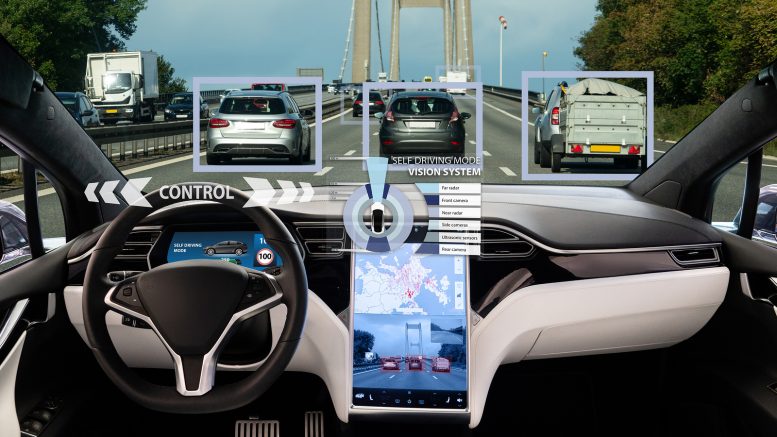Vehicle safety technology is constantly evolving with new innovations. While many are still not standard equipment on vehicles, they are still helping to save lives and make the road a safer place.
The focus is now shifting from protecting people in crashes to preventing them from happening in the first place.
These six driver assistance technologies are helping improve road safety.
1. Electronic Stability Control
Electronic stability control, or ESC, is largely considered the most important of crash avoidance technologies.
ESC helps prevent cars from sliding out of control, even when driving in the snow, by reducing engine power and/or momentarily applying the brakes to individual wheels.
Transport Canada estimates that if ESC had been made standard in 2006, it could have prevented 755 serious injuries and 225 deaths.
2. Lane Departure Warning
A lane departure warning system will alert the driver if the vehicle is drifting out of its lane using dashboard lights or vibrating the steering wheel.
If the vehicle has lane departure prevention or assist, it will attempt to steer the vehicle back into its proper lane.
The capabilities of these systems will vary from one car to another. Some will keep a vehicle in the middle of its lane, while others will make a vehicle swerve from side to side.
It’s important to keep in mind that these systems only work when they’re turned on. The IIHS found that lane departure systems that beep are typically turned off by drivers.
According to the IIHS, lane departure warning systems have not reduced insurance claim rates, but they have reduced the rates of sideswipe, single-vehicle and head-on collisions.
3. Automatic Emergency Braking (AEB)
An automatic emergency braking (AEB) system can prevent 50% of rear-end crashes. Even when AEB systems fail to prevent a collision, they reduce the severity of it and cut the number of injuries in half.
A forward collision warning system keeps an eye on the road ahead using cameras and radar systems. It watches for vehicles, large animals and pedestrians. When the system detects a potential collision, it warns the driver using lights and alarms. Depending on the system, it may also control the steering or brakes. Warnings alone are enough to reduce rear-end crashes by 27%.
An AEB system takes it one step further by automatically applying the brakes if the driver fails to heed all warnings. Newer systems will even attempt to steer around an obstacle if it is safe to do so and without departing from the vehicle’s lane.
AEB systems are still not standard in vehicles and were initially introduced as a feature on luxury vehicles. Most mainstream vehicles now have these systems as an option.
Most of the auto makers in North America have signed a voluntary agreement to make AEB standard on all new passenger vehicles by 2022.
4. Blind Spot Warning
Rear blind spots account for 18,000 injuries each year and 300 fatalities. Blind spot detection and warning system are helping reduce these statistics.
Radars allow your vehicle to “see” other vehicles that you may not be able to see using your mirrors alone. If a vehicle is in your blind spot, the system will alert you with a warning light in or near your side mirrors.
If you attempt to change lanes while someone is in your blind spot, the system may vibrate your steering wheel to alert you of the potential collision.
According to the IIHS, blind spot warning systems have been shown to reduce lane-change crashes by 14%.
While not standard on all vehicles, these systems are generally a less expensive option than other collision avoidance systems.
5. Cross/Traffic Alert
Cross/traffic systems can alert drivers if there is a vehicle approaching from the side when backing up or crossing an intersection. Some systems only work when the vehicle is backing up. Others are designed specifically for intersections.
The level of warning varies from system to system. Some will only warn the driver to take action, while others will automatically brake.
The IIHS found that nearly 100% of drivers who have these systems keep them turned on. They’re not intrusive and can prevent parking lot fender-benders.
6. Backup Camera
Backup cameras are now a required feature on new vehicles. These systems work by providing an image of the area behind the vehicle. They help prevent back-over crashes as well as collisions with other vehicles and objects. They provide drivers with a better view of the area behind the vehicle. The backup camera display is typically located on the vehicle’s dashboard, and usually includes a 10-foot by 20-foot zone view of the zone directly behind the vehicle



Be the first to comment on "6 Driver Assistance Technologies That are Making Roads Safer"